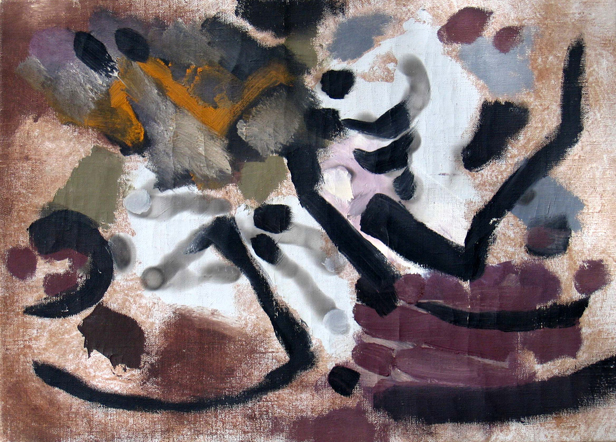Threshold of a New Art
Click the image to enlarge.
Threshold of a New Art - Artwork of the 1950’s: A Selection from the Lucid Art Foundation Collection was an exhibition held at the California Institute of Integral Studies in San Francisco February 6 - March 31, 2006. Curated by Fariba Bogzaran, PhD, the exhibition examined a particular period of the Bay Area’s cultural development in the 1950s using artwork from the collection of the Lucid Art Foundation. The exhibition addressed the philosophy of the "Dynaton group," the beginning of the Asian Academy, and the artistic life on the Ferryboat Vallejo in Sausalito.
The central artist linked with all the artists in this exhibition is British-born American Gordon Onslow Ford. A member of the Parisian surrealist group, he moved from Paris to New York and then Mexico during the war. Later he moved to California in 1947. He and his artist friend Wolfgang Paalen resigned as surrealists while in Mexico and embarked on a new vision. In 1951, they delivered this new vision in San Francisco with an exhibition at the San Francisco Museum of Art (now San Francisco Museum of Modern Art) called Dynaton. Three other artists that were essential to this exhibition were painter Lee Mullican, writer Jacqueline Johnson, and designer Luchita Hurtado.
A few months after the Dynaton exhibition a new wave of interest in Asian philosophy flowered in San Francisco with the arrival of Dr. Haridas Chaudhuri at the American Academy of Asian Studies. Dr. Chaudhuri was welcomed by a group of enthusiastic artists and scholars. At the Academy, he lectured on Hinduism, meditation, and integral philosophy; Alan Watts taught Zen Buddhism; and Hodo Tobase taught calligraphy. Among their students were Rudolph Schaffer, the founder of the Rudolph Schaffer School of Rhythmo-Chromatic Design in San Francisco; painter Gordon Onslow Ford; artist Ruth Asawa; and many other artists. The Academy became a center of a vibrant East-West dialogue and had a major impact on local artists. Dr. Chaudhuri and his wife Bina cofounded the Cultural Integration Fellowship and the California Institute of Asian Studies (currently called the California Institute of Integral Studies).
Many of the artists in this exhibition connected with the Academy through Gordon Onslow Ford. He studied with Dr. Chaudhuri and Alan Watts, and he studied calligraphy with and became a disciple of Hodo Tobase. He introduced many of his artist friends to the scholars at the Academy, including two of his surrealist friends, Wolfgang Paalen and Roberto Matta. He also introduced his musician friend Harry Partch, who built his own musical chamber instruments, and painter Richard Bowman, whose work in the 1950s concentrated on “Kinetogenics” or energy-generating forms. John Anderson, the youngest artist represented in this exhibition, met Onslow Ford in 1958 when he was a painting student at the California College of Arts and Crafts (now the California College of Arts) in Oakland. He too studied at the Academy, focusing on Tibetan Buddhism.
















